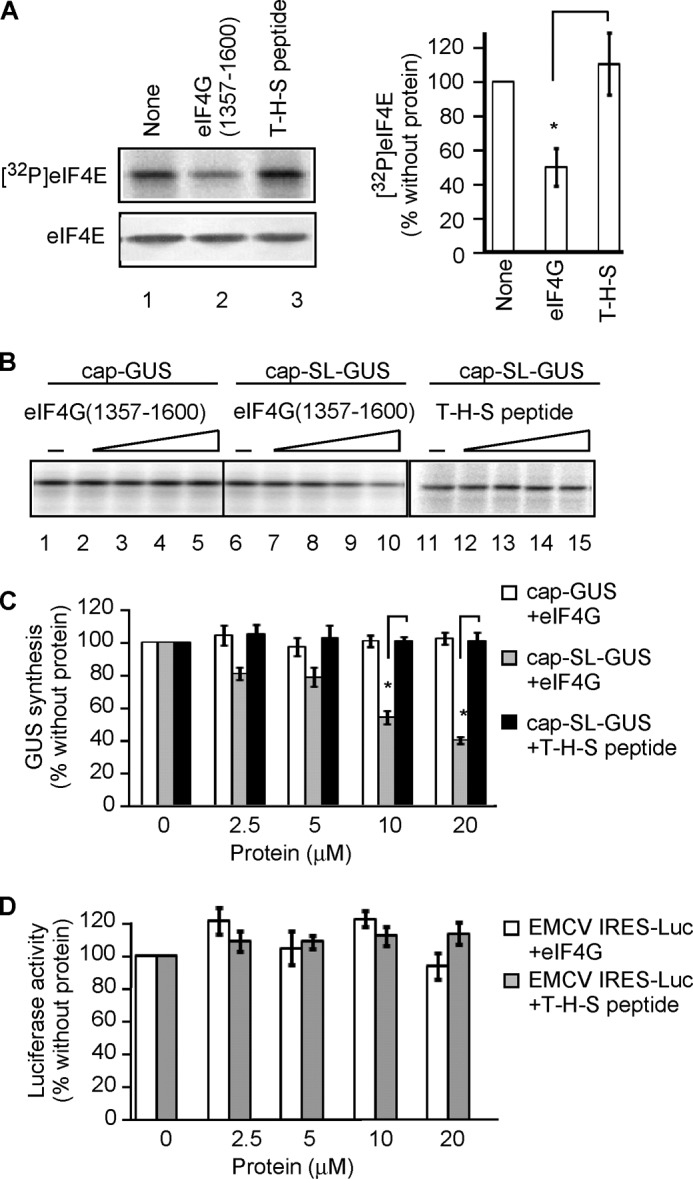FIGURE 7.

eIF4G(1357–1600) inhibits translation only of an mRNA containing both a cap and 5′-terminal hairpin. A, left, phosphor image of [32P]eIF4E and Western blotting of eIF4E in RRL containing [γ-32P]ATP and incubated in the presence or absence of 10 μm eIF4G(1357–1600) or 20 μm T-H-S for 25 min. Right, quantitation of the [32P]eIF4E signal intensity normalized to total eIF4E in similar experiments expressed as a percentage of the signal in translation reactions without additional proteins (n = 3, mean ± S.E. (error bars)). *, p < 0.01. B, eIF4G(1357–1600) inhibits translation of cap-SL-GUS but not cap-GUS mRNA. Shown is a phosphor image of [35S]GUS synthesized from either cap-GUS or cap-SL-GUS mRNAs in RRL in the presence of 0, 2.5, 5, 10, or 20 μm eIF4G(1357–1600) (lanes 1–5 and lanes 6–10, respectively). Cap-SL-GUS mRNA was translated in the presence of the same concentrations of the T-H-S (lanes 11–15). C, quantitation of data from experiments similar to B (three with eIF4G(1357–1600) and two with the T-H-S) expressed as a percentage of the GUS signal in reactions without additional proteins. *, p < 0.01. Open bars, cap-GUS mRNA with eIF4G(1357–1600); gray bars, cap-SL-GUS mRNA with eIF4G(1357–1600); black bars, cap-SL-GUS mRNA with T-H-S. D, luciferase synthesis from IRES-Luc mRNA in the presence or absence of either eIF4G(1357–1600) (open bars) or the T-H-S (filled bars). Data are expressed as percentage of the luciferase signal in reactions without additional proteins (n = 3, mean ± S.E.).
